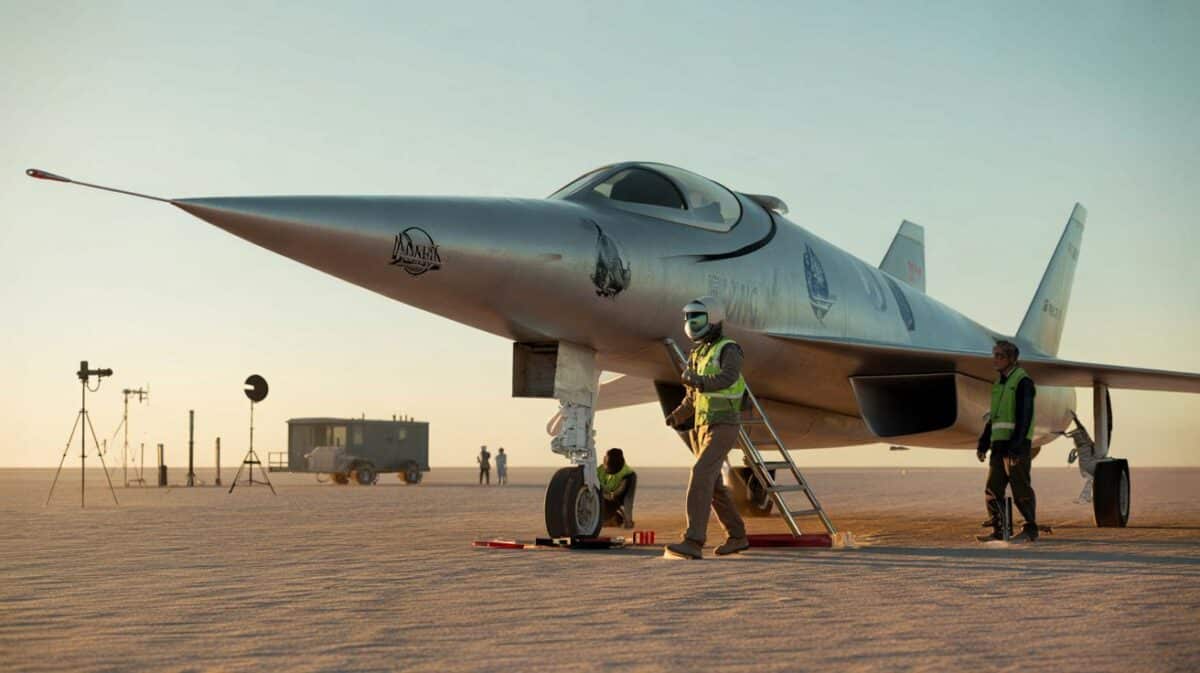Then the sound, a rolling rumble that seems to rise from the tarmac itself. A Lancaster bomber has touched down for restoration, and with it lands a coil of memory, engineering grit, and the quiet pressure of getting history right in public view.
The wheels kissed the runway and people stopped mid-conversation. A child on a scooter froze, wide-eyed. Mechanics in orange tabards tilted their heads as if listening to a favourite old song they’d forgotten they loved. A gull looped lazily over the control tower, and the four Merlins spooled down with a last, throaty cough. *You could smell warm oil and damp grass and the faint tang of brake dust.* The crew waved, modest and small against the black wing. Then the hangar doors began to move. Something else would move, too.
Touchdown, and the weight of what follows
We’ve all had that moment when a machine feels almost alive, even before anyone touches a spanner. The Lancaster rolled in like it knew the drill: straight-as-a-ruler track, a gentle swing of the tail, tyres whispering over tarmac patched by winters and time. People filmed, but plenty forgot and just watched, hands in pockets, air cold in their lungs.
During a war that reshaped the map, 7,377 Lancasters were built; today, only two fly regularly. That number is a statistic until you hear this one arrive and see the rivets like constellations across its skin. **Watching a Lancaster taxi is like hearing Britain clear its throat.** The restoration crew formed a steady halo around the aircraft, not rushing, not fussing, just present, as if to say: we’ve got you, old friend.
This is where romance yields to process. Restoring airworthiness is a chain: strip, inspect, measure, document, and only then repair. Wooden spars are not the story here, but corrosion control and fatigue checks absolutely are. Each Merlin will get borescoped and leak-tested; each control cable will be traced like a vein. The paperwork matters as much as the propellers, because flying history lives on certificates as well as wings.
Inside the restoration: methods, mishaps, moments
The first move is deceptively simple: get it clean. Panels come off, dirt gets mapped, and the team photographs everything before a single bolt is cracked. **Clean before you repair: grime lies.** Old sealant can disguise hairline fissures, and a glossy surface hides pitting. Touch becomes the fastest tool—gloved fingers reading aluminium for tells the eye misses.
There’s a rhythm to this work that looks slow but saves weeks. Label every loom. Bag every fastener. Build a parts wall that mirrors the aeroplane’s own silhouette. Let’s be honest: nobody actually does that every day. Still, when you’ve got control runs older than your grandparents, that discipline stops small errors turning into expensive legends. The team knows the calendar is a suggestion, not a promise, and keeps one eye on the weather as much as on torque settings.
The lead engineer described it in a way that stuck with me.
“You’re not fixing an old plane,” she said, “you’re keeping a living archive in condition to tell the truth at full throttle.”
Here’s what that truth looks like in practice:
- Non-destructive testing on high-stress points: spar roots, engine mounts, undercarriage legs.
- Merlin runs at low power to read temperatures and vibes before any big asks.
- Fabric and sealant checks on control surfaces where time does its quiet work.
- Paper trail updates, because the story has to be traceable, not just plausible.
Why this landing belongs to everyone
You don’t have to be a buff to feel it when that big black wing slides into a hangar’s light. The restoration is practical—spares lists, solvent wipes, torque wrenches—but it’s also shared memory in a dozen accents. A veteran’s daughter leaves a note on the fence. A teenager asks why it smells like old bikes. A volunteer holds a door with the same care as a cowling.
Maybe this is what a country sounds like when it listens to itself. Not fireworks, not parades, just patient hands and a low hum of competence moving through a cold morning. **If flying is theatre, restoration is rehearsal—quiet, necessary, and where the truth gets its legs.** The Lancaster has landed, yes. But really, it has arrived where the next chapter begins.
| Point clé | Détail | Intérêt pour le lecteur |
|---|---|---|
| Arrival for restoration | Touched down to begin inspection, cleaning, and certification work | Know what “restoration” actually involves beyond a photo op |
| What gets checked | Merlins borescoped, control cables traced, corrosion and fatigue tested | Understand the hidden work that keeps history safely airborne |
| How to witness it | Visitor windows, open hangar days, and volunteer programmes | Ways to see, support, or take part in the story |
FAQ :
- Is the Lancaster going back into the air?That’s the aim, pending inspections, parts availability, and regulatory sign-off; timelines can shift.
- How long does a deep restoration take?Anywhere from months to a couple of years, depending on findings once panels come off.
- What’s the biggest technical challenge?Managing age-related fatigue and corrosion while staying faithful to original specifications.
- Can the public visit during the work?Often, yes, via scheduled viewing hours or open days; check the airfield’s announcements.
- How can I help?Donations, volunteering, and simply turning up—interest keeps the lights on and the stories flying.









That last cough of the Merlins—goosebumps.